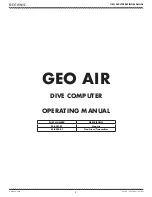
24
of 148
With REMOTE control active,
all additional program sections need
to be interrogated internally.
If PLC operation is involved, this
prolongs the measurement times by
the following factors:
With operation via an interface
(Init,Status:Operation:Event?,Fetch?,...), the measurement times depend heavily on the computer in use and
the programming technique.
The faster the computer and the interface card, the more frequent the interruptions in the 2329's measurement
process and the greater the drainage of its processing capacity.
Therefore, if a fast computer is in use, it should only be used to trigger the measurement and fetch the results
once the measurement is complete.
With an RS232,
this can be achieved by configuring queues on the PC having the same magnitude as the expected measurement
time. Subsequently, the status register can be used to determine whether the measurement is OK. If so, the
measured value can be requested and read out. This is probably the fastest method.
Compared with standard PLC measurements without REMOTE control, the measurement time in this case
increases by roughly 4 ms prior to a measurement (command decoding) and approximately 42 ms after the
measurement (286/12 MHz, QBasic). The actual measurement time with constant scanning of the status
register increases by approximately 25 %.
For example: Number 2000, fastest setting, standard procedure: 15 ms + 25 % + 4 ms + 42 ms = 65 ms.
Under identical conditions - but with the measurement-value display deactivated via a control command - the
response time drops to roughly 22 ms after completion of a measurement.
For example: Number 2000, fastest setting, standard procedure: 15 ms + 25 % + 4 ms + 22 ms = 45 ms.
With an IEEE488,
the RESISTOMAT
®
mdoel 2329 can be configured such that it triggers an SRQ on the completion of a
measurement or the occurrence of a measurement error. This eliminates the need for constant polling during
the actual measurement. With an IEEE488 and 286/12 MHz, QBasic and SRQ mode, the measurement time
rises to roughly 2 ms before a measurement (command decoding) and roughly 3 ms after the measurement.
The actual measurement is ony prolonged by the REMOTE factor (see above).
For example: Number 2000, fastest setting, standard procedure: 15 ms + 20 % + 2 ms + 3 ms = 23 ms.
Range
Factor
200 m
Ω
1.2
2
Ω
1.2
20
Ω
1.2
200
Ω
1.2
2 k
Ω
1.2
20 k
Ω
1.4
200 k
Ω
1.5
20 mV
1.4
















































